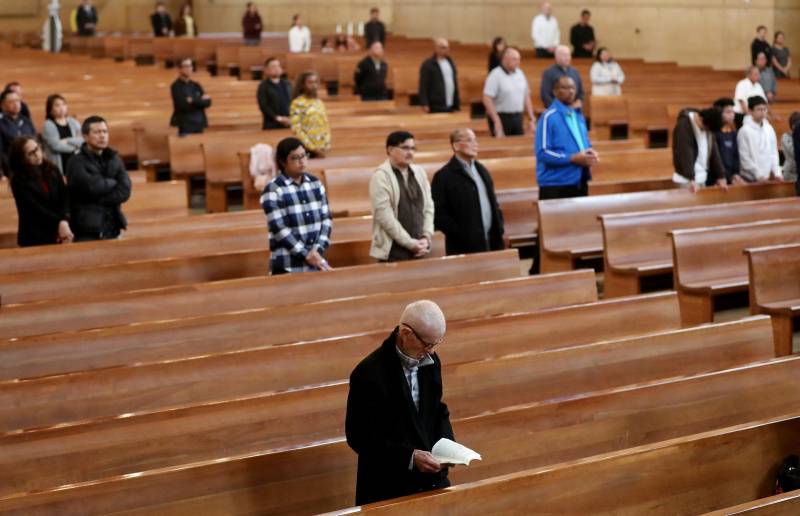Updated March 26, 2020
Amidst the COVID-19 pandemic, Calfornia has ordered people to stay at home except to go out for essential tasks like shopping for food and supplies.
In times of great stress, people normally turn to others for support and strength, but slowing the spread of an uncontrolled pathogen means limiting social contact.
Elissa Epel, professor and vice chair of the Department of Psychiatry at UCSF, says one of the best ways to deal with anxiety and isolation is to “prioritize self-care during this time.”
“We absolutely should be getting enough sleep, which helps build immunity to viruses; exercising, having social support, but at a social distance,” Epel says.
Epel and two of her colleagues shared tips for how to do that with KQED’s Mina Kim on an episode of Forum.
Anxiety is okay but worst-case scenario thinking can lead to panic. Manage anxiety by absorbing facts, limiting media consumption and tuning into reliable sources.
If you are not feeling at least some anxiety, you are not facing reality, Epel says.
But anxiety is our friend as it leads to good behavior and risk mitigation. “It’s really just a matter of being OK with appropriate anxiety, managing it well and not letting it turn into panic,” she said, adding that limiting media helps, especially sensationalized material.
Because when people focus on worst-case scenarios, it can lead to panic.
“In psychology, we know this as herding behavior, where people follow the crowd rather than making rational decisions,” she said. “Just like how the stock market falls. It’s very important that we just stick with the facts and with reliable sources.”
Develop local networks to extend a helping hand to other people
You should think about ways to stay engaged with friends and family as much as possible, even while practicing social distancing, says Eric Klinenberg, director of the Institute for Public Knowledge at New York University.
“As much as we need social distancing right now, we also need social solidarity,” he said.
Klinenberg suggests setting up volunteer networks of people who can teach or entertain your friend’s children for 30-minute blocks online. Said Klinenberg: “A lot of people are home, isolated with kids right now, and their kids must be going nuts.” You can also help older adults learn to use online tools. High school- or college-age students who are home from school can be especially helpful, he said.
The pandemic is affecting many older people, who were already marginalized in the U.S., says Carla Perissinotto, associate chief of Geriatrics Clinical Programs at UCSF. For seniors who are less comfortable with online networking tools, Perissinotto recommends phone-based programs for coping with anxiety. These include the Institute on Aging’s friendship line and Well-Connected by Covia.
We can’t control the situation. But mindfulness will help regulate our emotions.
Managing the outbreak is a marathon and not a sprint. Consider how you can live well, Epel says.
“Mindfulness is absolutely helpful in times like this,” she said.
Familiar with the concept of mindfulness but not sure how to practice it? There’s an app for that. “There are apps that promote 10 minutes of mindfulness a day,” Epel said. “We’ve tried them at UCSF and found thate we are reducing stress levels within weeks.”
UCSF recommends mindfulness apps for its students. Find the list here.
Kaiser Permanente compiled a reviewed list of mindfulness apps here.
